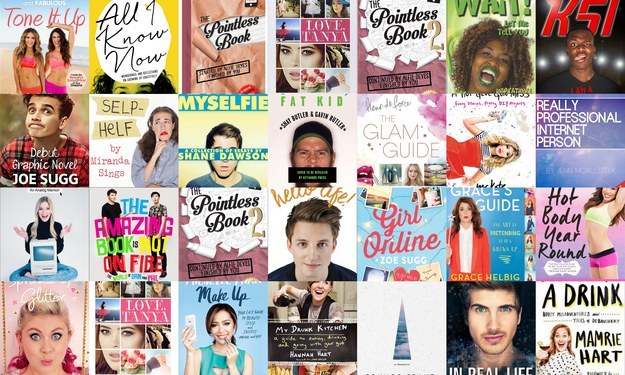After all, most of us now know to FCUK fashion, to envy the car in front and have, if we are honest, spent some time contemplating the philosophical ramifications of what exactly beans means.
Strong brands attract customers; it’s as simple as that. Even if your product or service is targeted at the business rather than consumer market, little will be as critical to its long-term success as the way it is perceived by those likely to buy. As John Blyth, head of marketing at printing chain Kall Kwik, notes, ‘if you’re operating in a crowded marketplace it is your brand identity that can help you stand out.’
Style versus content
The problem is that the notion of developing an alluring brand may sound simple enough, but the reality is often far different. Even household names can get it wrong – take Royal Mail’s much maligned temporary transformation into Consignia for instance.
To those in the know the secret is planning. Hamish Pringle, director general of the Institute of Practitioners in Advertising argues, ‘there are usually two types of start-up: those who have a great idea and decide to just start and those who research thoroughly and identify a market to target.’ Sadly, Pringle opines, the former outnumber the latter and often ‘just throw money at the wall in the hope that some of it sticks.’
But of course the need for planning extends further still. So while it is essential to understand your target market from the off and to identify the issues concerning them, simply applying the lessons learnt to your product packaging is missing the point.
‘The big danger with small firms is that they may spend a fortune developing a brand without building in the necessary core values,’ elaborates David Taylor, author of a number of books on branding, including The Brand Gym.
It is a point self-styled brand guru Marcel Knobil is eager to reinforce. ‘One thing no company should ignore,’ he insists, ‘is the fact that strong brands are always built around a good quality product or service.’
Learn from the big guns
Though it may sound obvious, the need for a strong product to build a brand around cannot be overstated. In fact it is all too apparent when you consider the big household names.
In the car world, for instance, the likes of Bentley, BMW and Ferrari continue to attract specific customer groups because of the inherent qualities associated with their vehicles.
Likewise, aspirational clothing companies such as French Connection and Ted Baker have performed exceptionally well in recent times thanks to their products and marketing activities working harmoniously together. Contrast that to Marks & Spencer’s ill-fated attempts to change its clothing lines several years ago.
‘The key is to guarantee consistency,’ Kall Kwik’s John Blyth reasons. ‘Regardless of who you are, the product has to live up to expectations on all occasions.’
Evolution not revolution
To Marcel Knobil the message is simple, you ‘must make sure the brand stands for something specific and remains consistent with that core brand value rather than shifting with the latest trend or fashion’.
Consider the Royal Mail’s transformation into Consignia. With hindsight the move has now become viewed as a failed attempt to build a more international brand. The problem, however, as Steve Mattey, managing partner of brand image consultancy Tree, points out, was that ‘it didn’t mean anything or express any value of the product. Just changing your logo and letterhead is pointless.’
Related: Brand Turnarounds – Can you re-brand your way out of trouble?
Yet this is not to say that there is never room for improvement. On the contrary, as Knobil counsels, ‘it is absolutely critical to be contemporary, but you shouldn’t just be like a piece of flotsam moving with the tide.’
The secret is thus to realise what it is you want your company or product to be known for and to have the discipline to realise when you have reached that point and to consolidate, all the while ensuring that the product continues to match expectations.
After all, as Mattey concludes ‘it’s more important to be best to market than first to market’ – come up with the goods, add a touch of creativity and the branding battle is virtually won.
Case Study 1 — Overcoming a negative image
Feelfine is a fledgling drinks company, which manufactures and distributes the ‘recovery’ drink of the same name. Thus the company has two main issues to overcome, first, securing a foothold in an already mature market and second, overcoming the negative stereotypes associated with its closest competitors.
‘There is a perception that we’re entering the energy drink market but that is a misconception,’ explains chairman Richard Berkley.
This may seem a pedantic point, but when the leading players in the energy drink market include the likes of Red Bull (undoubtedly a strong brand yet also a controversial one having recently been banned by the French government) it does mark a genuine hurdle for Feelfine to overcome.
‘There are negative connotations associated with the energy drink sector’ concedes Berkley and this means that the onus is on Feelfine to set itself apart. The secret to this, he explains, stems from the drink’s unique position of being stimulant-free. Instead of heavy doses of caffeine or taurine it contains a series of natural complex sugars such as fructose.
This means that while Feelfine is stocked alongside the likes of Red Bull in the refrigerators of its distributors including Tesco, Safeway and WH Smith, it can also legitimately target the health sector.
Feelfine’s approach to marketing reflects this focus. TV advertising is eschewed ‘as we don’t want to spend that kind of money’. But, says Berkley, ’we are holding the Feelfine British 10k run in central London on 1 August’ – a perfect showcase for the product when you consider that there will be ‘around 20,000 runners competing in Feelfine T-shirts, with the whole event being televised on Channel 5’.
Case Study 2 — Moving with the times
With around 100 years of trading already behind it, the challenge facing mutual insurance business UIA is – as marketing director Ian Cracknell readily admits – one of translating the company’s values into a contemporary brand.
To Cracknell this is no easy task as the realities of the insurance sector mean that ‘people buy because you are competitively priced and stay because they are happy with your service.’ In such markets it is often tough to define yourself as being any different to your competitors.
In a bid to overcome this problem UIA chose to conduct a large-scale research project involving customers, members and affiliated groups – the idea being to establish exactly how others perceived the brand.
‘What we discovered,’ enthuses Cracknell, ‘is that we have a certain ethos which is ethical and which many people are drawn to.’ During the research process it ‘became apparent that people do not mind paying a bit more for insurance providing their money is being used in an ethical way’.
Having originally formed out of the National Association of Local Government Officers, UIA retains strong links with trade unions, charities and other not-for-profit organisations and has always, says Cracknell, ‘invested in a sociably responsible way’. In the past this was a trait the company never really emphasised. Now, however – as a result of the research – UIA’s social responsibility has become an integral part of its revised brand.
As for the future, Cracknell concedes that ‘we will continue to look at the brand as it’s not just one of those things you can alter and then leave. It’s a continued evolution.’
Case Study 3 — Keep to your core principles
‘The difficult thing with people businesses is that you can’t just tick the usual branding boxes, it’s all about service,’ says Deborah Lewis, co-founder and joint managing director of 20-person marketing and PR services business Republic.
And yet, while building a brand may be difficult in such sectors, that does not diminish the importance of the process. To Lewis it is therefore essential to frequently ask how the service is perceived by your customers, particularly because, as a PR firm, ‘clients expect you to be able to secure column inches and to be able to speak to journalists.’
‘You have to make sure that you have a core set of values which govern your service, and that all of your pretty pictures (brochures etc) reflect these values’, Lewis continues. ‘Most importantly of all it is essential to ensure that the way your employees behave reflect these principles, as they are your brand’.
Communication is the key to motivating everyone to pull together. ‘So you have to have business planning meetings each year and then keep everyone abreast of what’s happening on a regular basis. We find company newsletters really help in this area.’
After seven years, meanwhile, Republic has recently re-branded, Lewis explaining that it was more a question of ‘refreshing’ than anything else. ‘That is not something SMEs should be afraid of,’ she adds, ‘as long as you keep your core principles.’
Case Study 4 — Building a brand from scratch
Like Feelfine, Reality Telecom faces a brace of branding problems. In its case, however, the tasks in hand are to establish a brand for its product Call Navigator (corporate switchboard technology) and, perhaps even more challengingly, to build awareness of the sub-sector. ‘It’s a market we’re having to start from scratch,’ explains marketing director Allison Lockyer.
Due to this unusual position, Lockyer explains that the company has opted to build its brand through a mix of ‘top-down and bottom-up’ marketing. So on the one hand the company employs PR advisers to help secure product and corporate references in the appropriate quarters of the press, while on the other it works to both identify and educate potential distributors.
One thing Lockyer is realistic about is that ‘building brand awareness doesn’t just happen overnight,’ thus ‘it’s important to concentrate marketing pennies wisely and target the appropriate sections of the press. We don’t,’ she explains ‘go to the nationals, as for a company like us that would just be throwing money away.’
Finally, she professes to being realistic that – with Call Navigator only having been launched fully in November – aspects of the brand will evolve over time. Though Reality has identified a gap in the market, Lockyer concedes that ‘most of us have never been in a position where we are having to develop a market as well as a product. Everyone knows what a mobile phone is, for instance, so it’s easy to be innovative, but in a way we are still struggling to define the brand ourselves.’
See also: Ten tips for successful brand realignment in a multi-channel world






